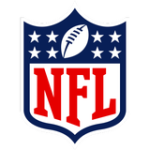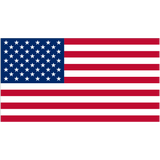It took Peter Moore about 30 minutes at a Xerox machine in 1993 to create the most iconic piece of design in American soccer history.
Moore had made his name years earlier at Nike, as the designer of the first Air Jordan sneaker and the iconic “Jumpman” logo. He’d helped grow the sportswear and shoe brand from a tiny Oregon startup to a global titan before leaving for Adidas in the early 90s. There, he’d continued knocking almost every design out of the park. By the time Moore stood at the copy machine, most of the world’s soccer jerseys bore the ascending three stripes of the modern Adidas logo that he’d designed.
Advertisement
This was not Moore’s first soccer project. Among his first tasks at Adidas had been designing the beautiful, baggy men’s and women’s kits they’d worn in the early 90s, with the blue and red stripes up the shoulder. But this particular assignment – designing the USMNT’s kits for the 1994 World Cup, the first ever to be hosted in the United States – felt more important than most. Moore, remembers his close friend and associate Mary McGoldrick, had kept the circle close on this one. Barely anybody at Adidas’ U.S. headquarters in Portland had any idea what he was up to, and even fewer at the company’s global headquarters in Germany.
Moore took a piece of denim – Levi’s, he remembered before his death in 2022 – and laid out some paper stars on it. He pressed the copy button on the Xerox machine and slowly, methodically, dragged the swath of fabric across the glass.
“Remember,” said Moore, “in 1993, computer graphics were not really in existence, at least not in Portland, Oregon. In other words, we got our hands dirty.”

The USMNT in the denim kit at the 1994 World Cup. (Photo by Stephen Dunn/Getty Images)
Moore took one look at the output of the copy machine and knew right then and there that he’d nailed the design. He’d just created the “denim kit,” and over 30 years later, those kits remain iconic. They are held aloft by some as the pinnacle of American soccer design and they are derided by others, reduced to a frivolous example of gauche 90s fashion, chucked in a bin alongside the purple and teal designs of the day.
Undeniably, though, the kits evoke memories of that tournament, the one where the USMNT finally solidified America’s love affair with the global game. On sun-drenched fields in California and under the roof of the Silverdome, the 1994 USMNT exceeded all expectations, emerging out of a very tough group and fighting gallantly against eventual champion Brazil.
Advertisement
Years later, the kit’s popularity has only increased. You see it everywhere at national team matches and it has become wildly bootlegged and emulated, maybe the ultimate mark of relevance.
Tuesday, with another World Cup on home soil just over a year away, we got our first look at the USMNT’s latest kit – a red and blue pinstriped number dubbed the “heartbeat kit” that frankly may be its best offering in recent years. It’s simple and bold without being boring, feels highly wearable off the pitch and seems an ideal stopgap between the USMNT’s current shirts and the 2026 World Cup designs, which they’ll presumably release closer to the tournament itself.
There’s a new complete women’s set as well, including the lighter “brilliant kit.” Both were designed in collaboration with women’s players Lynn (Williams) Biyendolo, Naomi Girma and Sophia (Smith) Wilson, and men’s players Kellyn Acosta, DeAndre Yedlin and Walker Zimmerman. The designs, U.S. Soccer says, celebrate the legacy of its teams and the “passion of U.S. Soccer fans across the country.”

USWNT rising star Lily Yohannes wears the team’s new kit, which has hallmarks of the famous 1994 USMNT jersey. (Courtesy of U.S. Soccer)
The men’s kit, which they’ll debut on June 7 in a friendly against Turkey, is evocative of the 2007 “Copa” kits that were only worn for a single year. It’s a vintage design that remains a favorite these days, and Nike and U.S. Soccer have done well to emulate it, even if perhaps unintentionally.
The men’s shirts, though, pale in comparison to the new women’s kits, which offers a callback to the denim kit. The washed-out stars, the red-and-blue trim around the neck … even the sublimated, vertical stripes are reminiscent of the USMNT’s home kit at the ‘94 World Cup, the “wavy flag” design that never quite achieved the notoriety of Moore’s other design that year.
The women’s “brilliant” design, which will be debuted on May 31 in a friendly vs. China, frankly would not make a bad men’s World Cup shirt. The women’s kits have been largely aligned with the men’s kits for years, and the women’s team has done just as much, if not more, to solidify the legacies of some of those designs. (The men will be sticking with their current white kits for the time being.)
Advertisement
One thing feels certain enough: whatever the USMNT ends up wearing in 2026 needs to be daring and bold and brash. U.S. Soccer, and Nike, need to look to iconic designs of the past – the denim kit, or the “bomb pops” – to determine their course for the tournament. It feels easy enough to argue that this tournament could prove the most pivotal moment in the history of American men’s soccer – maybe even bigger than the ‘94 tournament – and the U.S. needs to be equipped with something memorable.
There are risks, of course. Had the USMNT crashed out in the group stage in ‘94, for example, it feels almost certain that the denim kit would’ve become a punchline, the latest example of how decision-makers in American soccer had “gotten it wrong.” Take the oversized Nike kits, the ones the USMNT wore in 1998. They’re not bad-looking on the surface, but the design itself is imbued with the team’s failure in France, a painful memory.

USMNT’s Weston McKennie and Mark McKenzie model the team’s new kit. (Courtesy of U.S. Soccer)
The opposite, of course, also holds true. Fans adore the bomb pops not only because they broke the trend of “clean” design, but because of Clint Dempsey or John Brooks celebrating goals in it at the 2014 World Cup. USWNT fans love the 2019 kits – which, on the surface are a little bland – not because of the design itself but because of the World Cup the women won in it, something that can be said for their 1999 kits as well.
As for the denim kit? Fans love it because of Wynalda, Lalas, Harkes and the lot on those sun-drenched fields. Nike can only get so close to the denim kit before it runs into copyright and intellectual property issues with Adidas, a chief competitor. And it’s worth noting that as design cycles go, much of the design work for the men’s kit is likely already done, leaving precious little room for adjustment.
But we can always hope they get it right. The task at hand for the USMNT and Nike is two-fold: create an iconic design, and live up to it. If they do, Nike likely won’t be able to print enough jerseys to meet demand. If they come up with something forgettable – and if the team itself puts on a forgettable performance – the shirts will only prove as evidence of a painful, embarrassing memory.
(Top photos: Courtesy of U.S Soccer)
This news was originally published on this post .








Be the first to leave a comment